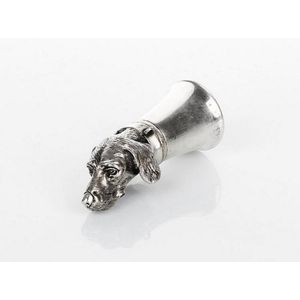Italian Baroque Double Credenza with Ionic Pilasters
You must be a subscriber, and be logged in to view price and dealer details.
Subscribe Now to view actual auction price for this item
When you subscribe, you have the option of setting the currency in which to display prices to $Au, $US, $NZ or Stg.
- Pilasters - In furniture a pilaster is a flattened column-like detail
applied to furniture. It is similar to a pilaster in architecture, but it is
typically smaller and less ornate. Pilasters are often used to decorate the
fronts of bookcases, cabinets, and other pieces of furniture. Pilasters can be
made of wood, metal, or other materials. They can be fluted, carved, or plain.
Pilasters are often used to add a touch of elegance and sophistication to
furniture. - Verso - Verso is the "back" side of a sheet of paper, art work, coin or medal. The front side is "recto".
- Baroque Furniture - Baroque furniture is a style of furniture that was popular in Europe during the Baroque period, which spanned from the late 16th to the early 18th century. Baroque furniture is characterized by its ornate, decorative design, which often features elaborate carvings, gilding, and other embellishments.
Baroque furniture was popular in many European countries, including Italy, France, and Germany, and it was often used in the homes of the wealthy and in royal palaces. The Baroque style is also associated with the Church, and many churches and cathedrals from this period feature Baroque-style furniture and decorations.
The Baroque style of furniture is characterized by ornate and extravagant design elements that originated in Italy in the 17th century and spread to other parts of Europe, where it was particularly popular in the courts of royalty and the wealthy aristocracy. Baroque furniture is often made of rich materials such as gold, silver, and precious woods, and it is decorated with intricate carvings, inlaid designs, and gilded or painted finishes. - Cornice - The upper section of a high piece of furniture such as a bookcase, wardrobe or cabinet that sits immediately on the main structure. The cornice is usually decorated with a variety of architectural mouldings, worked either with a moulding plane or, from the later 19th century, by machine. The front and side of the cornice are mitred together, strengthened by glue blocks, and the back is generally a simple dovetailed rail to hold the structure together. Cornices are generally, though not always, fitted separately to the piece and are held in place either by screws sunk into the top board or by wooden corner blocks. A pediment may sit above the cornice, but sometimes the terms cornice and pediment are used interchangeably.
- Egg and Dart Moulding - A decorative element consisting of a row of oval shapes, generally vertical, and spaced with pointed darts or tongues. Originally derives from the architectural decorations of classical antiquity, and the feature can be found on bookcases, mirrors and tables and other furniture imitating the classical style.
- Reeding - A series of parallel, raised convex mouldings or bands, in section resembling a series of the letter 'm'. The opposite form of fluting, with which it is sometimes combined. Reeding is commonly found on chair legs, either turned or straight, on the arms and backs of chairs and couches and around table edges in the Neoclassical or Classical Revival manner. Reeding was also used as a form of decoration during the Edwardian period, but it is usually much shallower and evidently machine made.
- Dentil Moulding - An architectural ornamental feature found on furniture, usually directly beneath the upper mouldings on a cornice. The timber is cut in a series of deep rectangular sections, alternatively raised and flat, like the crenellation on a castle battlement. In appearance not unlike a row of small teeth. From the latin "dens", teeth. Most commonly seen on bookcases, chests and cabinets, and less frequently on desks and wardrobes.
- Bracket Feet - On bracket feet the corner edge is square and joined by a mitre to its partner on the opposite angle. The inner edge is usually shaped or scalloped. Bracket feet were first introduced in the early 18th century and used until c. 1830 and are found on carcase furniture such as chests, cabinets, bookcases and bureaux.
Ogee bracket feet, a variation on straight bracket feet, have the outside edge forming an "S" shaped curve with the top bulging outward and the bottom turning inward.
On splayed bracket feet, the exterior edge curves outward.
This item has been included into following indexes:
Visually similar items

A garnet and pearl spray brooch, vine leaf and grape motif. Silver gilt. Weight 12.75 grams. Length 8.2 cm.

A diamond line bracelet, comprising forty round brilliant cut diamonds totalling 10.00cts, mounted in 18ct white gold, total length 180 mm. Condition: This piece presents in as new condition and stones are secure in their settings. In Leonard Joels opinion

Two Japanese red lacquer Ozen trays, c. 1920 -2. Height 17 cm and 18 cm, width 39.5 cm and 60 cm

Russian silver stirrup cup in the form of a hound''s head marked 84 zolotnik, Cyrillic makers mark P.O. Height 12 cm weight 133
